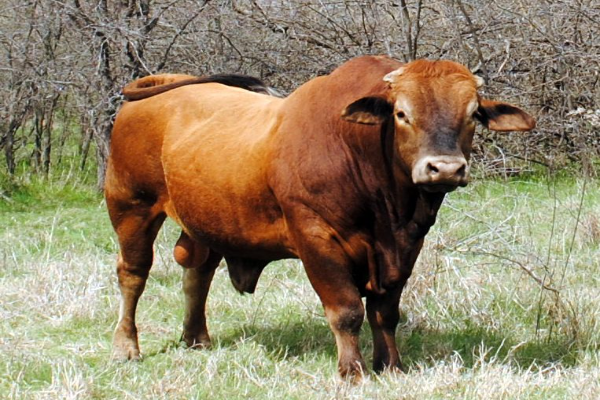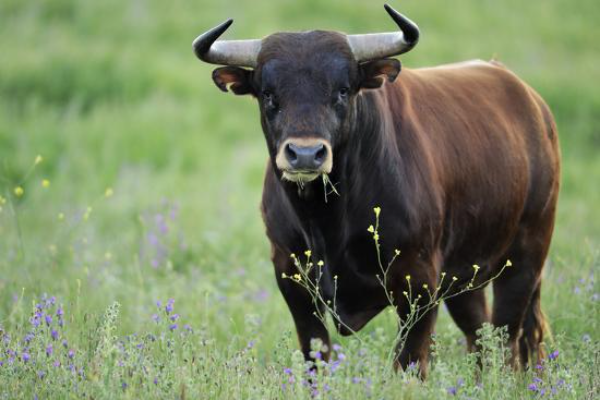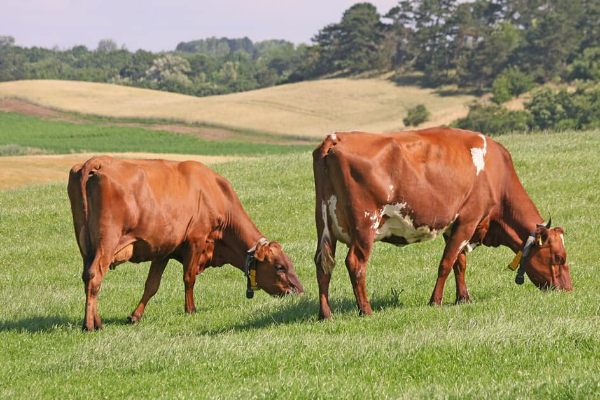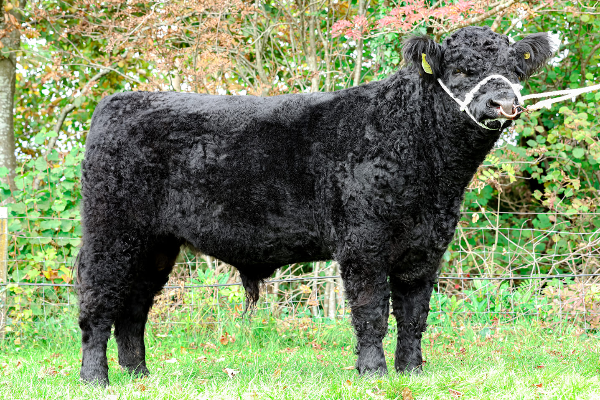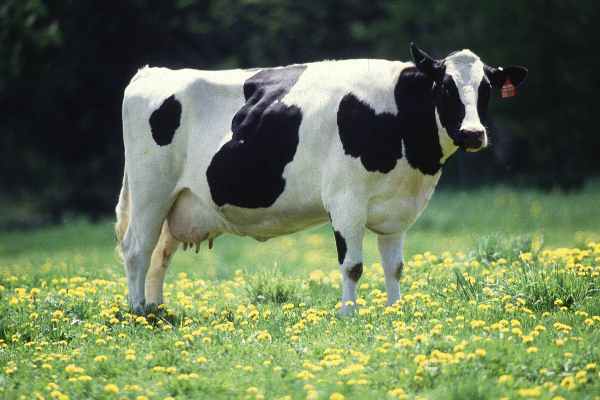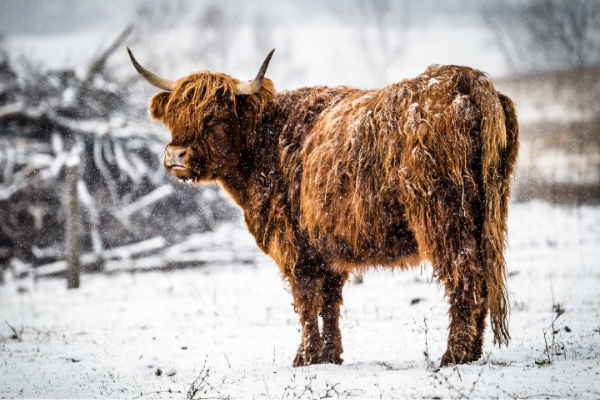Australian Milking Zebu Cattle
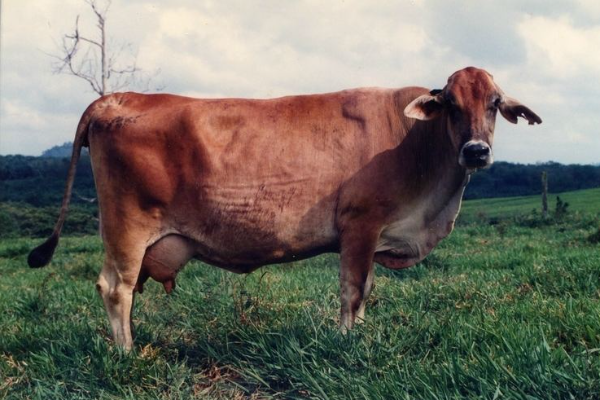
The Australian Milking Zebu (AMZ) Cattle is a composite breed that is developed by the Commonwealth Scientific and Industrial Research Organization (CSIRO) in Australia during the mid-1950s in an effort to overcome the problems of traditional dairy breeds performing at reduced levels under hot, humid, and tick-infested conditions.
To develop Australian Milking Zebu Cattle, the CSIRO bred Sahiwal and Red Sindhi cattle from Pakistan with Jersey cattle. Some Illawarra, Guernsey, and Friesian genetics were included as well.
Careful interbreeding of the half-bred progeny, combined with strict selection criteria have resulted in the Australian Milking Zebu breed.
The development of this cattle breed was managed by strict selection for heat tolerance, milk production and cattle tick (Boophilus microplus) resistance to result in the modern Australian Milking Zebu breed.
The Australian Milking Zebu Cattle have been similar to Australian Friesian Sahiwal, Adaptaur, Jamaica Hope, Illawarra cattle, Belmont Red breeds.
What Is The History Of Australian Milking Zebu Cattle?
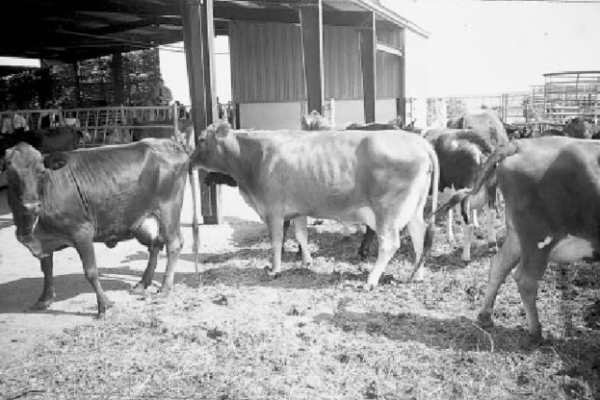
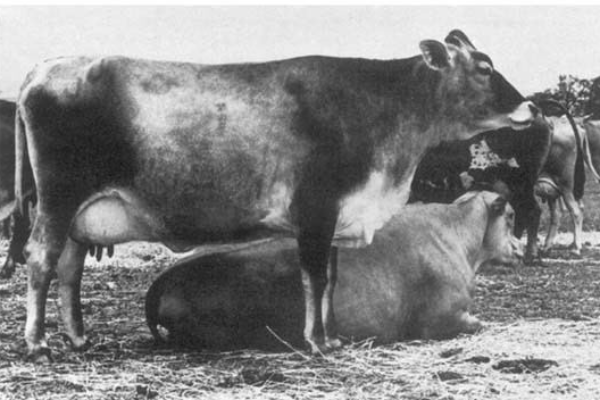
Heat,
sickness and parasites hindered European breeds of dairy cattle from realizing
their full potential for milk production in tropical areas.
Cattle native to these regions are hardy and adapted to the conditions but are poor milk producers. Since 1954 CSIRO has been engaged in breeding a dairy animal in which the best characteristics of European and Asian cattle have been combined.
The Australian Milking Zebu Cattle was founded on a very small base of three male and female Sahiwal and four male and four female Red Sindhi animals, introduced from Pakistan in 1952.
The initial stage consisted of producing a herd of 270 F1 to F3 Bos indicus Jersey females at the field station. A high incidence of short lactations in the initial cross (70%) was reduced to less than 10% after three generations of strict selection.
A second stage was based on
progeny-testing of young bulls from top-yielding cows in cooperating herds of
predominantly Jersey breeding, selecting from the crossbred population. The Bos
indicus gene fraction stabilized at around 0.25.
The breeding program consisted of producing 30-40 candidate bulls per annum, after three independent successive stages of selection:
- Approximately half (i.e. 20) were selected for heat tolerance assessed in a climatic room.
- Approximately half of these (i.e. 10) selected for tick resistance under artificial infestation.
- The best one on progeny-testing for milk yield provided it was adequate for frozen semen production.
The program showed that it was possible to select simultaneously for milk yield and adaptation so that, in about 20 years, the animals had reached the milk yield of the Jersey base population but with increased heat tolerance and tick resistance.
What Are The Characteristics Of Australian Milking Zebu Cattle?

- The Australian Milking Zebu Cattle have the color, markings, and general shape of Jersey cattle, but also show their Sahiwal and Red Sindhi ancestry with their loose skin.
- They are characterized by a fatty hump on their shoulders, drooping ears, and a large dewlap.
- These cattle breed is well adapted to withstanding high temperatures and are farmed throughout the tropical countries, both as pure zebu and as hybrids with taurine cattle, the other main type of domestic cattle.
- They are used as draught oxen, as dairy cattle and as beef cattle, as well as for byproducts such as hides and dung for fuel and manure
- Cows produce approximately 2,700 kg of milk per lactation. The quality of milk is very high and the protein level is approximately 3.5 to 4 percent.
Sources
https://en.wikipedia.org
https://alchetron.com
https://csiropedia.csiro.au
https://www.researchgate.net
prezi.com
http://afs.okstate.edu

Written by
Researcher Ghost Writer
EditorBreedsMore
IllnessesMore
Forage cropsMore
![]() Патологическая физиология голодания Arina TARAN
Патологическая физиология голодания Arina TARAN![]() Дефицит фосфора (гипофосфатемия) Hipofosfatemi Arina TARAN
Дефицит фосфора (гипофосфатемия) Hipofosfatemi Arina TARAN![]() Какие бывают кормораздатчики для ферм КРС? Irina Makarova
Какие бывают кормораздатчики для ферм КРС? Irina Makarova![]() Кормушки для овец Diana Myakisheva
Кормушки для овец Diana Myakisheva![]() Питание домашних коз: что едят, виды корма и правила кормления Alina Arslantürk
Питание домашних коз: что едят, виды корма и правила кормления Alina Arslantürk![]() Важность минералов питании сельскохозяйственных животных Irina Makarova
Важность минералов питании сельскохозяйственных животных Irina Makarova

